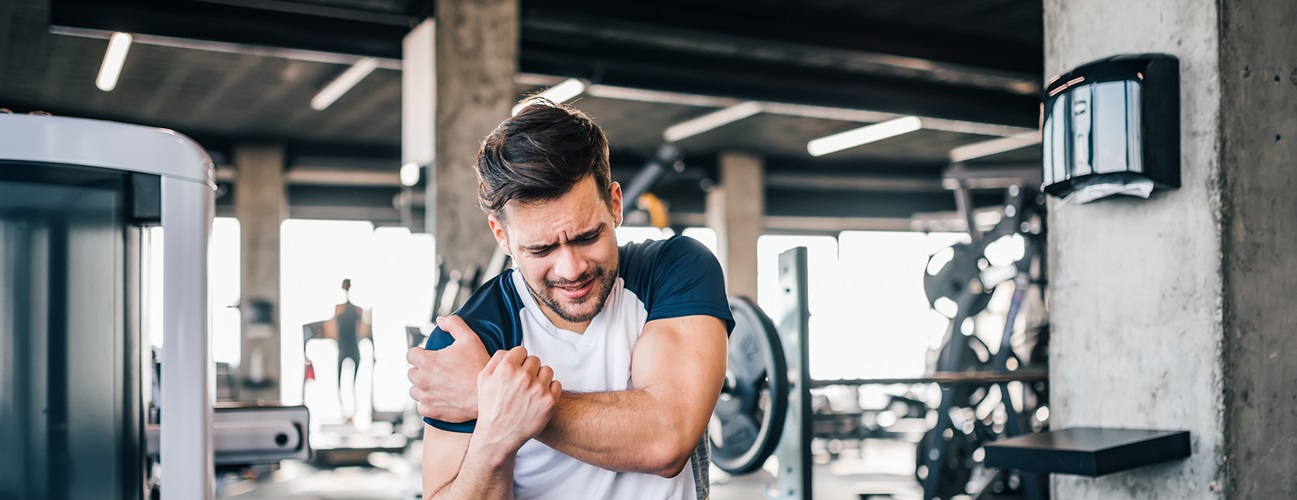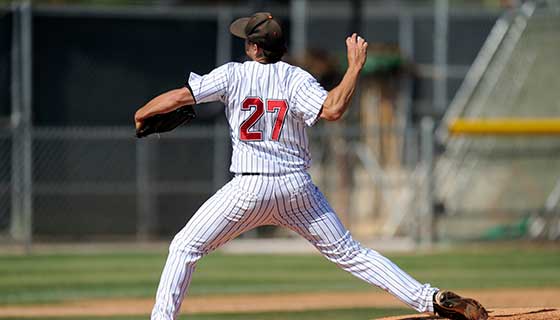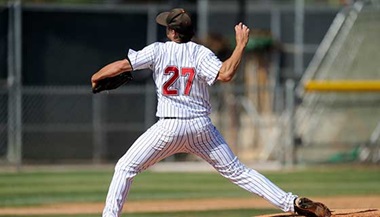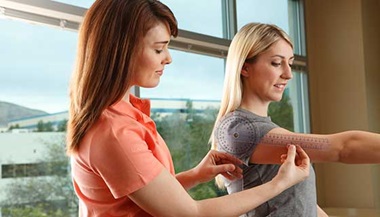AC Joint Problems
What You Need to Know
- The most common conditions of the acromioclavicular joint are arthritis, fractures and separations.
- Acromioclavicular joint wear and tear is common among weight lifters.
- Treatment for AC joint problems ranges from non-operative to surgical procedures depending on the type of injury.
What is the AC joint?
The acromioclavicular, or AC, joint is a joint in the shoulder where two bones meet. One of these bones is the collarbone, or clavicle. The second bone is actually part of the shoulder blade (scapula), which is the big bone behind the shoulder that also forms part of the shoulder joint. The portion of the shoulder blade that meets the clavicle is called the acromion. As a result, where the clavicle meets the acromion is called the AC joint. Like most joints in the body where bones meet, there is cartilage between the two bones, which is the white tissue between bones that allows them to move on each other, like Teflon on two ball bearings.
What types of conditions occur at the AC joint?
There are many things that can happen to the AC joint, but the most common conditions are arthritis, fractures and separations. Arthritis is a condition characterized by loss of cartilage in the joint, which is essentially wear and tear of the smooth cartilage that allows the bones to move smoothly. Like arthritis at other joints in the body, it is characterized by pain and swelling, especially with activity. Over time, the joint can wear out and get larger, with spurs forming around it. These spurs are a sign of the arthritis and not a cause of the pain. Reaching across the body toward the other arm aggravates arthritis at the AC joint. AC joint wear and tear is common in weight lifters, especially among those who bench press and to a lesser extent, military press. In weight lifters the arthritis at the AC joint has a special name — osteolysis.
How is arthritis of the AC joint treated?
When the cartilage is gone from the joint, there is no way to replace it. As a result, one way to treat arthritis is to modify your activities so as to not aggravate the condition. This does not mean giving up activities entirely but it may mean doing certain ones less often or with less intensity. For example, weight lifters may bench press only three quarters of the way down instead of doing a full bench press — or to exercise their pectoralis muscle (muscle made stronger by bench press), they may do a lift called a butterfly, which does not seem to irritate the joint as much as bench press.
Other ways to treat arthritis of the AC joint include the use of ice and medication. Application of ice to the joint decreases the pain and the inflammation at the joint. It is recommended that the more the joint hurts the more ice be used. Ice should be particularly applied after athletic activities — or if the joint is very sore, ice should be applied daily or as often as every two hours. Ice should be applied for 20 to 30 minutes directly to the joint either using an ice bag or by massaging the joint with ice cubes. Since the joint is relatively small, ice massage can be very effective, and paper cups filled with water and placed in the freezer make great ice cones for massaging the joint.
Medication that can typically decrease the inflammation includes aspirin or medications called nonsteroidal anti-inflammatory drugs. These are medications like aspirin but do not have to be taken as frequently as aspirin and include ibuprofen (Advil or Motrin), naprosyn (Aleve), Feldene, Clinoril, Daypro, Indocin and others.
What can be done if those treatments do not work?
If rest, ice, medication and modifying your activity does not work, then the next step is a cortisone shot. One shot into the joint sometimes takes care of the pain and swelling permanently, but the effect is unpredictable and may not last forever. Usually no more than one or two cortisone shots are given before surgery is considered.
If these treatments do not work then surgery can be considered. Since the pain is due to the ends of the bones making contact with each other, the treatment is actually removal of a portion of the end of the collarbone. The AC joint is one of the few joints in the body that you can live without a portion of the bone making up the joint. The surgery can be done through a small incision about 1-inch long, or it can be done with several small incisions using an arthroscopic technique. Regardless of the technique, the recovery and results are about the same. In most cases the patient can go home the same day as the surgery wearing an arm sling. The stitches come out about a week later and motion of the shoulder begins right away. It takes about four to six weeks to get complete motion and a few more weeks to begin regaining strength. Recovery is variable depending upon many factors but most patients are back to full activity by three months.
What are the results of AC joint surgery?
Most patients get excellent pain relief with this operation, and nearly 95 percent return to their preinjury level of activity and sports. There are few complications and most patients are very satisfied with the result. There is always a possibility of infection but it is rare. Occasionally a patient may have some fatigue or pain with extreme lifting or with exercises if the shoulder is not in shape. However, most patients are very satisfied with the surgery and can be more active than before surgery.
What is an AC joint separation?
When the AC joint is separated, it means that the ligaments are torn and the collarbone no longer lines up with the acromion. Ligaments are tough, sinewy tissues that act like tethers to hold the bones together. When those ligaments are stretched or torn they can be very painful.
The injury to the ligaments in an AC separation can be mild to severe. The injuries are graded depending upon which ligaments are torn and how badly they are torn. A grade 1 injury is where the least damage is done and only the joint itself is injured. A grade 2 injury consists of damage to the ligaments at the AC joint and also to the other ligaments that stabilize the joint. This second set of ligaments attach the collarbone to the part of the shoulder blade called the coracoid. These ligaments are called the coracoclavicular ligaments. In a grade 2 injury, these coracoclavicular ligaments are only stretched but not entirely torn. The collarbone may not line up with the acromion if these are stretched and results in a lump at the AC joint. In a grade 3 injury, the coracoclavicular ligaments are completely torn and the collarbone is no longer tethered to the shoulder blade. As a result the collarbone no longer lines up with the acromion and there is a deformity at the joint.
What is the treatment for AC joint separation?
These can be very painful injuries and the initial treatment is to decrease the pain. This is best accomplished by immobilizing the arm in a sling, placing an ice pack to the shoulder for 20 to 30 minutes as often as every two hours and using pain medication. The pain is usually proportional to the severity of the separation.
As the pain starts to subside, it is important to begin moving the fingers, wrist and elbow to prevent stiffness. Next it is important to begin shoulder motion to prevent a stiff or "frozen" shoulder. When and how much to move the shoulder should be done at the direction of your physician, physical therapist or trainer. Usually as the pain is decreasing you will find you can move it more, and this will not damage or hinder the healing process. The length of time needed to regain full motion and function depends upon the severity or grade of the injury. A grade 1 takes 10 to 14 days, whereas a grade 3 takes six to eight weeks. A grade 2 takes somewhere in between.
When is surgery indicated?
The good news is that the majority of grade 1, 2 and 3 injuries do not need surgery. Even the grade 3 injuries usually allow a return to full activity with few restrictions. There are some surgeons who recommend surgical treatment for high-caliber athletes who throw a baseball for a living, but the vast majority of people do not need surgery for this condition. There are rare variations of this injury where the collarbone is higher than usual and almost sticking through the skin. In these cases surgery may be indicated but careful consideration should be given to the advantages and disadvantages of surgery. The advantage is that the deformity at the AC joint is corrected, but in exchange there is a scar on the shoulder. Another advantage for the very severe deformity is that it will eliminate pain if the end of the collarbone is rubbing the skin or muscle. Disadvantages of surgery are that there are risks of infection, a longer time to return to full function and continued pain is some cases. Surgery can be very successful in cases where it is indicated.






